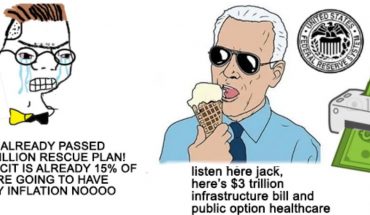BY DAWSON WEINHOLD STAFF WRITER
Our nation has a spending problem.
Last year, the deficit reached $779 billion. The Congressional Budget Office (CBO) is estimating that by fiscal year 2020 that number will reach 1 trillion. To many people, that number is just a figure on a spreadsheet. They’ll never come in contact with a sum of money even close to that amount, so it’s hard for them to envision.
Others simply don’t care. Unless it directly affects their taxes, government spending doesn’t concern them. It should concern them. Young people especially should be worried, considering the money borrowed today will be theirs to pay off down the road.
To understand the problem, we first must understand how governments can spend money they don’t have. When you or I need to borrow money, we go to the bank and get a loan. When the government needs money, it issues treasury bonds. Individuals, corporations and other governments can buy these bonds, and the U.S. government promises to pay them back with interest.
While borrowing allows the government to spend beyond its means, it has two nasty side effects. First, it pulls money out of the private sector. U.S. Treasury bonds have close to zero risk, since the U.S. government has very little chance of defaulting on them. This attracts investors who would otherwise invest in the private sector. Second, the government now has interest it must pay back, which means taxpayers foot the bill.
Looking at government expenditures, you can see how this negatively affects young people. The biggest expense is Social Security, which, according to the CBO, cost $982 billion in 2018 alone. Remember, money “paid into” Social Security doesn’t go into a trust where it can accrue interest and be paid back later. The government spends it with the promise of having the money to pay it back later. This generation now has the job of picking up the tab for the previous ones. In their defense, previous generations didn’t intend to bury their grandkids in debt. They just paid their payroll taxes.
If we can see a debt crisis on the horizon, why aren’t we taking measures to prevent it? That answer lies in politics rather than economics. Neither party’s base would allow it. Despite many Republicans championing spending cuts during the Obama administration, they have not made them now that they control the White House. Republicans’ aging base would disapprove of cuts to Social Security or Medicare, and cuts to the military budget would cause a split with the hawkish wing of the party. On the other side of the aisle, the Democrats have a more youthful base. Ironically, they seem to have fallen into the same trap as their parents: more spending for increasingly expensive social programs. Many of the 2020 Democratic candidates already struggle with how they will pay for their proposed programs, and even if they were able to pay for them with a combination of tax increases and austerity measures, that still leaves us with a nearly $1 trillion budget shortfall and no signs of reversing course.
The previous generation has failed to address the deficit and shows no signs that they will. The older they get, the less incentive for them to fix the problem. With the 2020 presidential election on the horizon, I hope that this younger generation of voters will restart that debate on the deficit. After all, it’s our future that’s at stake.



